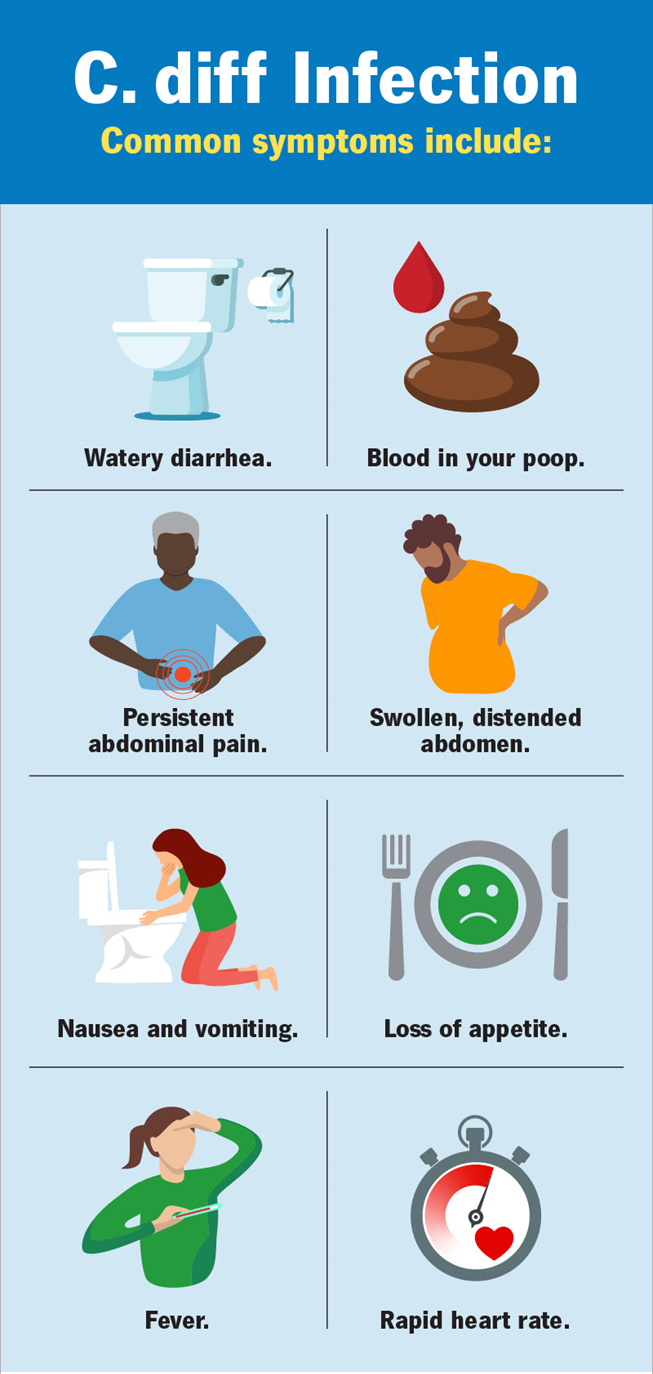A nurse is planning care for a client who has manifestations of a Clostridium difficile (C. difficile) infection. Which action should the nurse plan to take?
Place a surgical mask on the client during transport.
Use gown and gloves when entering the room.
Use an alcohol-based agent to perform hand hygiene when caring for the client.
Obtain a blood specimen to test for C. difficile.
The Correct Answer is B
Choice A reason: Placing a surgical mask on the client during transport is not the primary precaution for C. difficile infections. C. difficile is primarily transmitted through contact with contaminated surfaces and not through respiratory droplets. Therefore, while masks may be used for other infections, they are not the main precaution for C. difficile.
Choice B reason: Using gown and gloves when entering the room is essential for preventing the spread of C. difficile. This infection is highly contagious and can be transmitted through contact with contaminated surfaces or feces. Gown and gloves provide a barrier that helps prevent the transmission of the bacteria to healthcare workers and other patients.

Choice C reason: Using an alcohol-based agent to perform hand hygiene is not effective against C. difficile spores. Hand washing with soap and water is recommended because it is more effective at removing the spores from the hands. Alcohol-based hand sanitizers do not kill C. difficile spores and should not be relied upon for hand hygiene in this context.
Choice D reason: Obtaining a blood specimen to test for C. difficile is not the standard diagnostic method. C. difficile infections are typically diagnosed through stool tests that detect the presence of the bacteria or its toxins. Blood tests are not used for diagnosing C. difficile infections.
Nursing Test Bank
Naxlex Comprehensive Predictor Exams
Related Questions
Correct Answer is B
Explanation
Choice A reason: Consulting the family priest may provide spiritual support and guidance to the family, but it is not the most appropriate action for resolving a medical and ethical dilemma. The family priest may not have the necessary medical or ethical expertise to address the complexities of the situation
Choice B reason: The ethics committee is the appropriate body to consult in this situation. Ethics committees are composed of healthcare professionals, ethicists, and legal advisors who can provide guidance on complex ethical issues. They can help navigate the conflict between the parents’ religious beliefs and the medical necessity of the blood transfusion for the newborn. The committee can also ensure that the hospital’s actions align with legal and ethical standards.
Choice C reason: The Joint Commission is an accrediting body for healthcare organizations and does not provide direct assistance in individual patient care situations. While the Joint Commission sets standards for ethical practices, it is not involved in resolving specific ethical dilemmas at the patient level.
Choice D reason: The blood bank is responsible for the collection, testing, and distribution of blood products. While they can provide information about blood transfusions, they are not equipped to handle ethical conflicts related to the refusal of blood transfusions on religious grounds. The ethics committee is better suited for this role.
Correct Answer is C
Explanation
Choice A Reason:
A client who is 3 days postoperative and has a nursing assistant helping him out of bed is at some risk for falls due to recent surgery and potential weakness. However, the presence of a nursing assistant reduces this risk significantly. Postoperative clients are often monitored closely and assisted with mobility to prevent falls.
Choice B Reason:
An adolescent client who has a leg fracture and has been using crutches for the past 2 weeks is at risk for falls due to the use of crutches and limited mobility. However, adolescents generally have better balance and coordination compared to older adults, and they adapt quickly to using mobility aids.
Choice C Reason:
An older adult client who is confused and has urinary frequency is at the greatest risk for falls. Confusion can lead to disorientation and poor judgment, increasing the likelihood of falls. Urinary frequency can cause the client to rush to the bathroom, further increasing fall risk. Older adults also tend to have decreased strength and balance, compounding the risk.
Choice D Reason:
A client with diabetes mellitus who has a leg ulcer is at risk for falls due to potential neuropathy and impaired mobility. However, this risk is generally lower compared to a confused older adult with urinary frequency. The leg ulcer may cause some mobility issues, but it does not typically lead to the same level of disorientation and urgency as urinary frequency.
Whether you are a student looking to ace your exams or a practicing nurse seeking to enhance your expertise , our nursing education contents will empower you with the confidence and competence to make a difference in the lives of patients and become a respected leader in the healthcare field.
Visit Naxlex, invest in your future and unlock endless possibilities with our unparalleled nursing education contents today
Report Wrong Answer on the Current Question
Do you disagree with the answer? If yes, what is your expected answer? Explain.
Kindly be descriptive with the issue you are facing.
